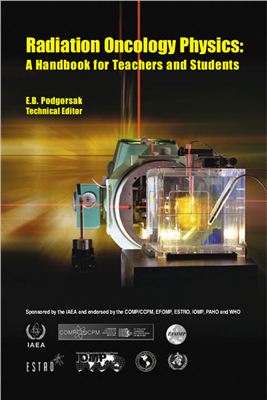IAEA, Vienna, 2005, - 696 p. (Анг. язык)
This handbook aims at providing the basis for the education of medical physicists initiating their university studies in the field. It includes the recent advances in radiotherapy techniques; however, it is not designed to replace the large number of textbooks available on radiotherapy physics, which will still be necessary to deepen knowledge in the specific topics reviewed here. It is expected that this handbook will successfully fill a gap in the teaching material for medical radiation physics, providing in a single manageable volume the largest possible coverage available today. Its wide dissemination by the IAEA will contribute to the harmonization of education in the field and will be of value to newcomers as well as to those preparing for their certification as medical physicists, radiation oncologists, medical dosimetrists and radiotherapy technologists.
This handbook aims at providing the basis for the education of medical physicists initiating their university studies in the field. It includes the recent advances in radiotherapy techniques; however, it is not designed to replace the large number of textbooks available on radiotherapy physics, which will still be necessary to deepen knowledge in the specific topics reviewed here. It is expected that this handbook will successfully fill a gap in the teaching material for medical radiation physics, providing in a single manageable volume the largest possible coverage available today. Its wide dissemination by the IAEA will contribute to the harmonization of education in the field and will be of value to newcomers as well as to those preparing for their certification as medical physicists, radiation oncologists, medical dosimetrists and radiotherapy technologists.

